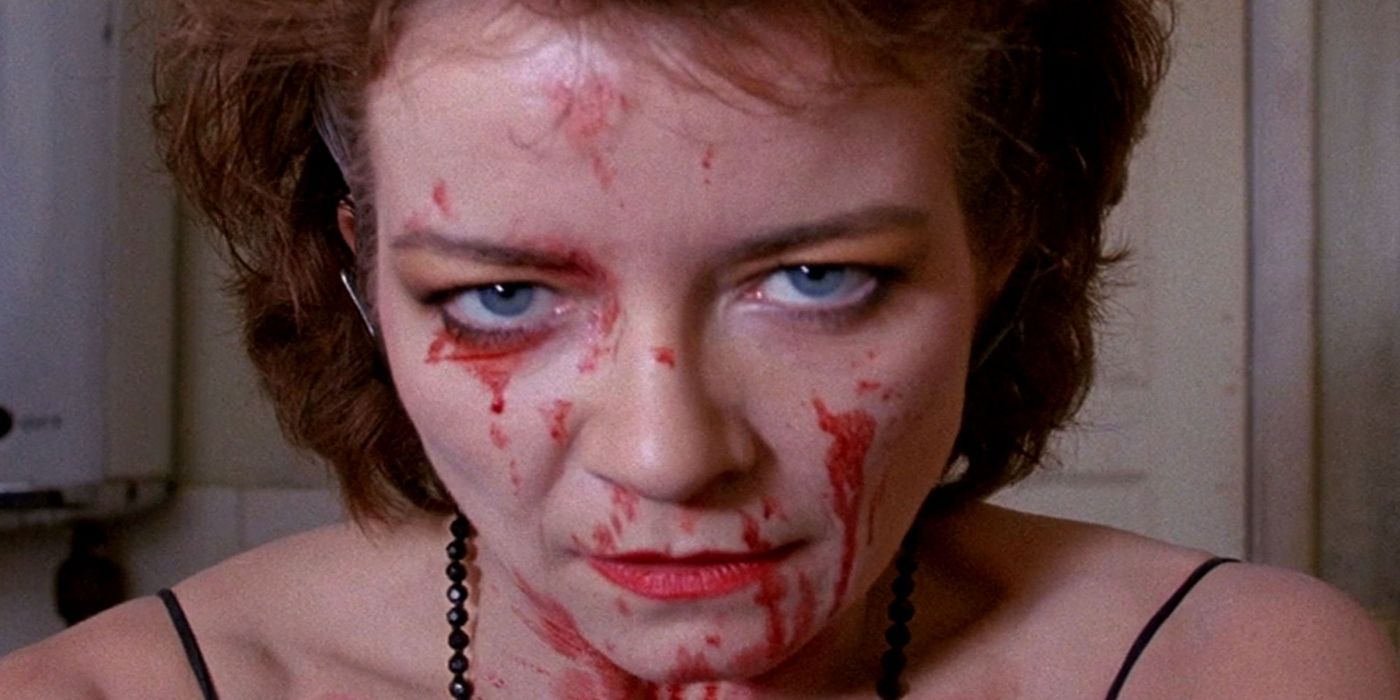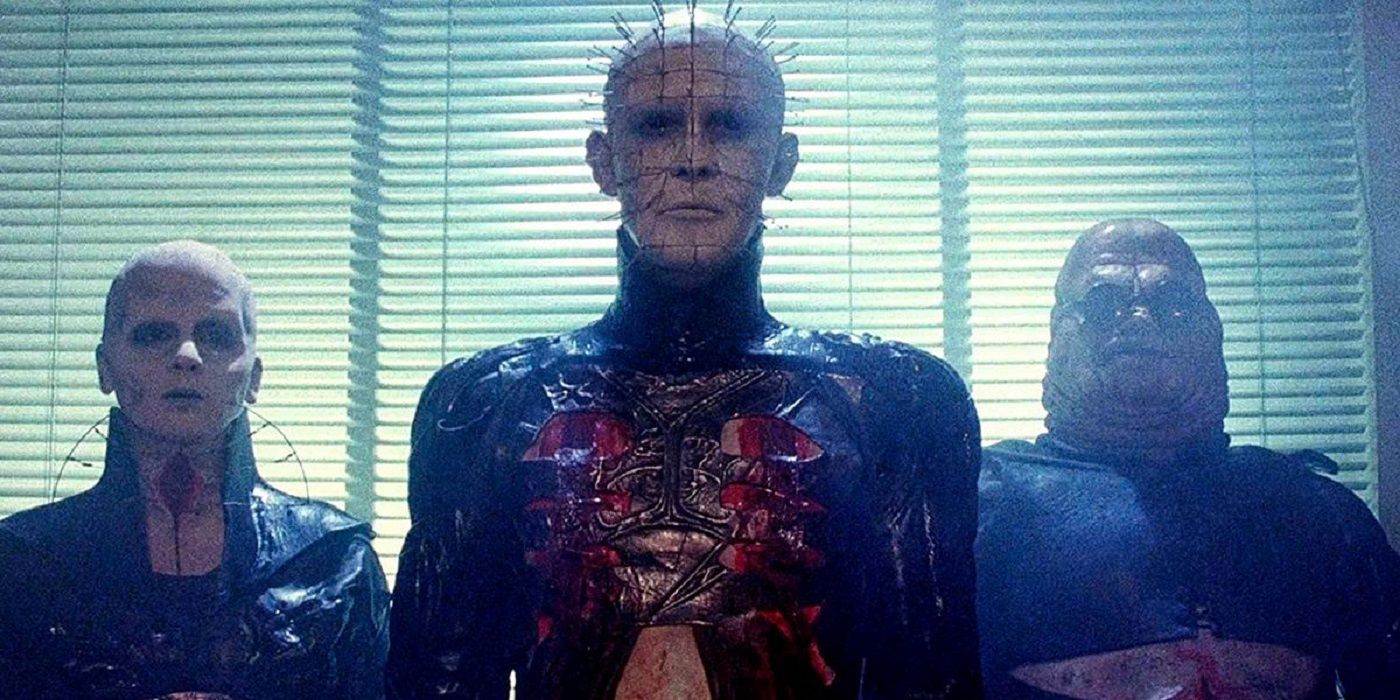After the release of Rawhead Rex, a film adapted from a short story by Clive Barker in The Books of Blood, the author was so enraged at the result that he decided to direct the next adaptation of his work. In 1987, Barker would helm the production of Hellraiser. Based on his novella, The Hellbound Heart, Hellraiser would capture the minds and imaginations of horror fans and simultaneously introduce the world to the Cenobites (aka The Order of the Gash), the enigmatic puzzle box known as lament configuration and a mythology that still permeates today. Hellraiser is sometimes grouped among some of the other prominent slasher films of the time due to some overlooking many of the subtle intricacies of Barker’s film that extend far beyond the limitations of horror.
Sex and death were integral to many slasher titles, but their utilization was for entertainment rather than as an integral part of the overarching narrative. Hellraiser, with its Sadean themes, a structure akin to a fairy tale, exploration of sadomasochism, and the birth of the Hell Priest (AKA Pinhead) and the Order of the Gash, subverted the typical expectations of horror. Just as the Cenobites proclaimed, it has such sights to show you.
A Gothic Fairy Tale in the Guise of a Horror Film
Hellraiser and the many sequels that it spawned are most memorable for the Hell Priest, now known as Pinhead, who has achieved the type of notoriety shared with Michael Myers. Understandably so, The Hell Priest (Doug Bradley), with his leather-clad appearance alongside the other Cenobites, known as the Order of the Gash, graces much of the promotional artwork associated with Hellraiser. Bradley’s performance as the Hell Priest would be the focal point and main antagonist in many of the sequels that would follow. However, in the original film, The Hell Priest would play something akin to a supporting role, and the crux of Barker’s narrative would primarily focus on the Cotton family. In fact, it’s worth noting that the real antagonists in Hellraiser are Julia and Frank.
Larry (Andrew Robinson) and Julia Cotton (Claire Higgins), newlyweds, have just moved into a new house, which will become the castle or gothic estate for Clive Barker’s film. Julia, somewhat discontent at her droll and somewhat bland husband, Larry, pines for the sexually stimulating touch of his brother, Frank (Sean Chapman), with whom she had a brief affair. Rounding out the family unit is Larry’s daughter Kirsty (Ashley Lawrence), a prototypical virginal heroine akin to Snow White, whose conservative and non-sexualized portrayal mimics Jessica Harper’s in Dario Argento’s Suspiria.
The integration of sex and death, as well as the underpinnings of sadomasochism, are introduced in Hellraiser by way of a juxtaposition of imagery. As Larry struggles to move a mattress upstairs, Julia reminisces about a sexual tryst with Frank. The climax in Julia’s flashback is matched with Larry cutting his hand on a nail, which causes an exorbitant amount of bleeding. When blood has been spilled in the attic, Frank’s disembodied corpse reanimates and comes into existence.
Julia, wishing to reunite with her lover, soon goes about bringing victims for Frank to devour, to reanimate, as it were. The plot of Barker’s complex fairy tale is now firmly entrenched within the narrative of Hellraiser. There’s the monster in the castle (Frank), the wicked stepmother (Julia), and, naturally, Snow White (Kirsty). The idea of Hellraiser being a fairy tale was further emboldened in the follow-up, Hellbound: Hellraiser II, where Julia remarks, “I’m not just the evil stepmother, I’m also the wicked queen, so take your best shot, Snow White” to Kirsty.
Related
Hellraiser’s Doug Bradley Would Suit Up as Pinhead Again Under the Right Conditions
The original Pinhead can envision himself portraying a different version of the character.
Inspiration from the Writings of The Marquis de Sade
Hellraiser, besides its similarities to being a fairy tale, also takes considerable influence from some of the literary works written by The Marquis de Sade, most notably in the characters of Frank and Larry (named Rory in The Hellbound Heart.) The two brothers, for all intents and purposes who are complete polar opposites from one another, are emblematic of two of de Sade’s most notable characters, Justine and Juliette. That is to say, siblings who follow two very different paths based on their individual worldviews.
Larry, the dutiful husband, can be compared to Justine, the titular character of de Sade’s text, Justine, or the Misfortunes of Virtue. Justine, raised in a convent, believes in upholding the virtues learned during her upbringing, which ultimately leads to her downfall and continuous humiliation. In a series of misadventures, Justine continually finds herself taken advantage of and humiliated by those willing to use her virtuous nature against her. Larry, duped by Julia, who intends to relive her fling with Frank, falls prey to this same type of human nature.
Frank, Larry’s brother, bears a striking similarity to Justine’s sister, Juliette. In Juliette, or Vice Amply Rewarded, the titular character follows a path that’s the precise opposite of Justine. Shedding her virtuous upbringing and engaging in a broad range of criminal actions, Juliette finds prosperity and contentment through lecherous deeds and simply takes what she wants from others. Frank is described as going on many misadventures and engaging in petty theft and other indulgences. This is what eventually leads Frank to seek out the mysterious Lament Configuration, which acts as the gateway to the Order of the Gash and their “doors to heaven and hell.”
Juliette and Justine, who have long been the archetypes for sadomasochistic roles, the one who is punished and the one who holds the whip, have also been emblematic of how many female characters are portrayed in film. Barker transposes this to his male leads. Even Julia embraces many of the characteristics of de Sade’s characters as someone who’s dissatisfied with their mundane existence and seeks liberation through deeds that defy complacency and societal expectations.
.jpg)
Related
Hellraiser: Why It’s Still a Horror Classic After 35 Years
Clive Barker introduced an uncharted circle of Hell, reinventing the supernatural horror.
Subverting Audience Expectations in a True Horror Classic
It takes a lot of ambition to subvert trends and offer something that stands out, especially when the demand for slasher films was high. Hellraiser was something that was not only unique but incorporated a lot of elements that many fans might not have been expecting at the time. Angels to some…demons to others… Clive Barker’s vision is extraordinarily grand and has made its permanent mark in the annals of horror cinema. Stream on Prime Video, Shudder, and Tubi.
Source link



















Add Comment